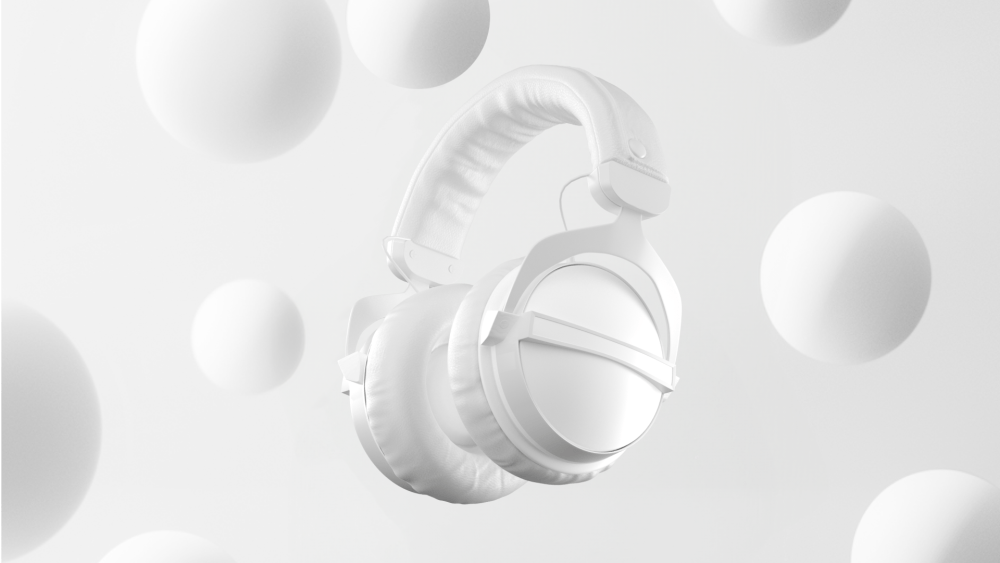So you need to buy headphones for audio work. You compare the spec sheets of a few popular models and you’re not sure what each of the specifications means and if they even matter. We hear you!
The truth is very little of the information found in headphone technical specifications reliably translates to their real-world performance. Frequency response range? Doesn’t tell you anything. All modern studio headphones cover the range of human hearing and beyond. Harmonic distortion? Most spec sheets will state something along the lines of “< 0.1% THD at 1kHz,” which means nothing, as no modern pro headphones will exhibit significant distortion at 1 kHz—it’s the sub-bass range that’s problematic in some models. Impedance should give you an impression of whether mobile devices such as laptops and tablets will be able to drive a particular pair of headphones, or if you’ll need a headphone amp. However, impedance doesn’t show you the full picture without taking sensitivity into account. In most cases, low-impedance headphones are easier to drive than higher-impedance ones, but there are plenty of 250 ohm headphones that can easily be driven from a smartphone. Then there are closed-back, open-back, and semi-open-back designs and different driver sizes and technologies: dynamic, planar magnetic, and electrostatic. The worst bit? Paying more doesn’t necessarily yield a higher quality product that will perform better at the task at hand. Long story short—choosing what headphones to buy can be daunting, especially if you’re new to this.
We’re here to help. We at Sonarworks have measured more than 800 different headphone models (read more about that in our blog article) and have compiled our knowledge so you can easily find answers to your questions. Customers have asked us for years: I have X euros, what are the best production/mixing/mastering headphones to use with SoundID Reference? This article will focus on the most budget-friendly options that are still worth your cash. While all these models sound great when used with SoundID Reference, without calibration, they’re considerably less neutral. However, they’re still the best options in this price range.
What to look for in headphones for Production / Mixing / Mastering?
When working long hours in the studio on your productions, mixes, and masters, two requirements absolutely must be met by your headphones: clean, neutral sound, and comfort. Some argue that neutral-sounding headphones are not needed in the production phase—that you don’t need to pay attention to the tonal balance of your track before you start mixing. We believe there are strong benefits to starting your work with flat sound right from the get-go. If you can hear every instrument and effect properly, without any coloration from your headphones, the decisions you make will likely lead to better-sounding productions. You’ll spend less time in the mixing phase fixing mistakes you wouldn’t have made if you just had a flat sound all along. And if instead of mixing your tracks yourself you send them to a mixer, there will be fewer surprises when you receive your mixed tracks back.
For the best available sound, go for the open or semi-open back models, as these designs inherently lead to flatter frequency response and produce a more natural sound. Keep in mind though that they do leak sound quite a bit and offer little sound isolation from the outside world. Also, if you don’t plan on calibrating them using SoundID Reference, the sub-bass response out-of-the-box is weak for these designs. If these are potential issues for you, choose one of the closed-back alternatives.
Here’s our list of the 10 best budget-friendly studio headphones, sorted in ascending order by price:
1. Monoprice Premium Hi-Fi DJ 8823

If you’re on a budget and you need headphones for production or mixing – these closed-back headphones are what you are looking for. These cans deliver where it counts and can be considered a serious monitoring tool once calibrated. Read the full headphone review here
2. Superlux HD 681

These semi-open headphones are an amazing deal. They sound relatively good on their own, but really become alive after individual calibration. Yes, they have their shortcomings, but at the extremely affordable price of €25 / $25, it’s hard to be picky. Read the full review here
3. Samson SR850
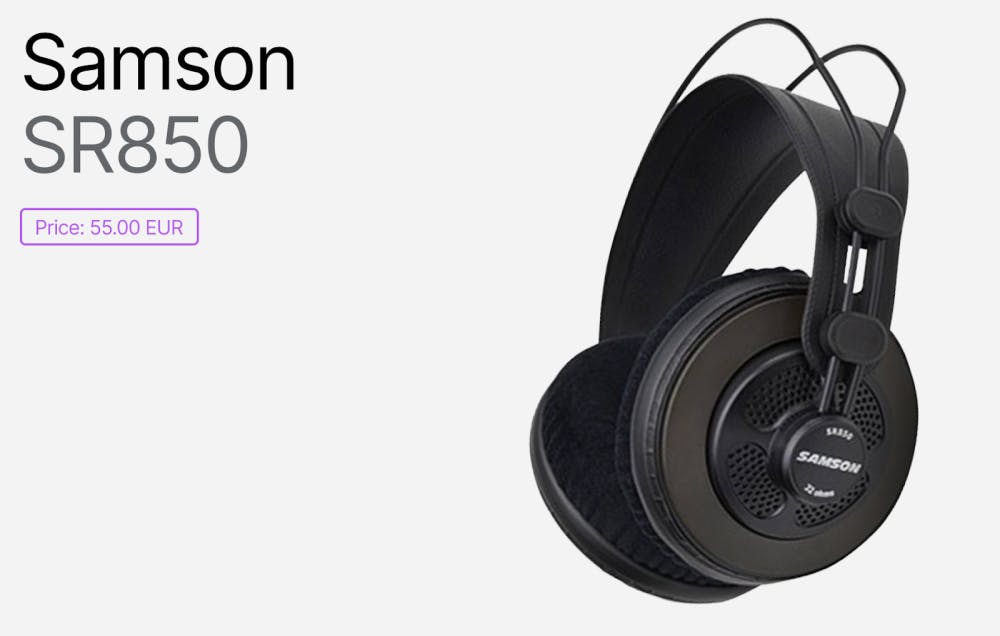
These semi-open headphones can bring out details in recordings and make it easier to hear imperfections. However, they don’t have the best build quality and don’t have a non-detachable cable. Overall, for the budget-friendly price, these headphones offer workable frequency response and when calibrated, become a serious studio tool.
4. Audio-Technica ATH-M20x
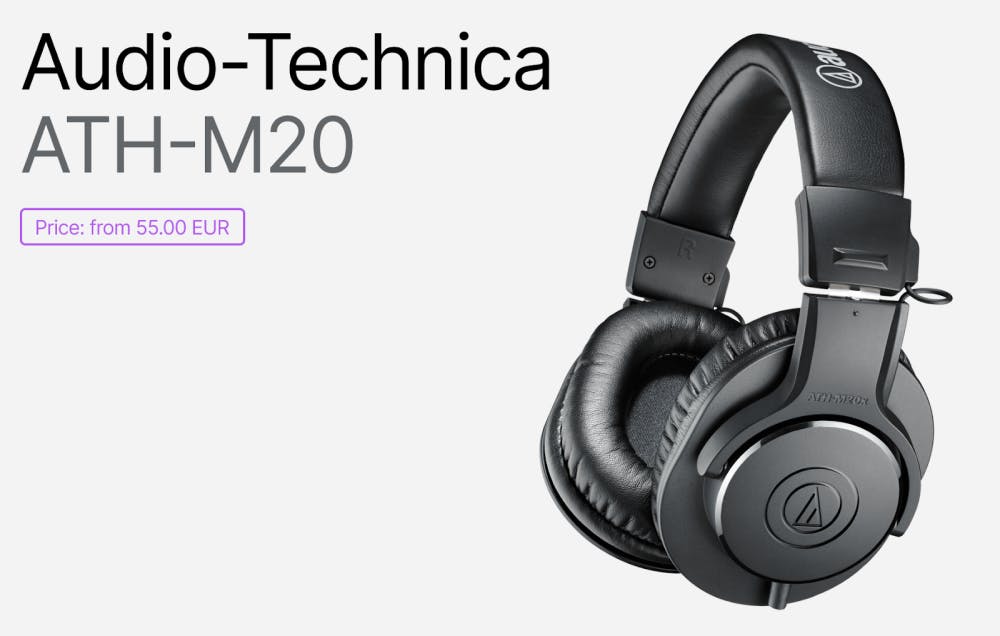
ATH-M20x’s are very natural-sounding closed-backs fit for mixing work and pack a considerable bang for your buck. For genres that don’t require surgical precision in sub-bass region, M20x is arguably a better choice than M50x when it comes to studio work. Read the full review here
5. Philips SHP9500S

Very comfortable open-back headphones that deliver a good, well-balanced sound. For the price, these are very durable headphones but they are also very bulky. Another minus is the relatively high THD in the sub-bass.
6. Beyerdynamic DT 240 Pro
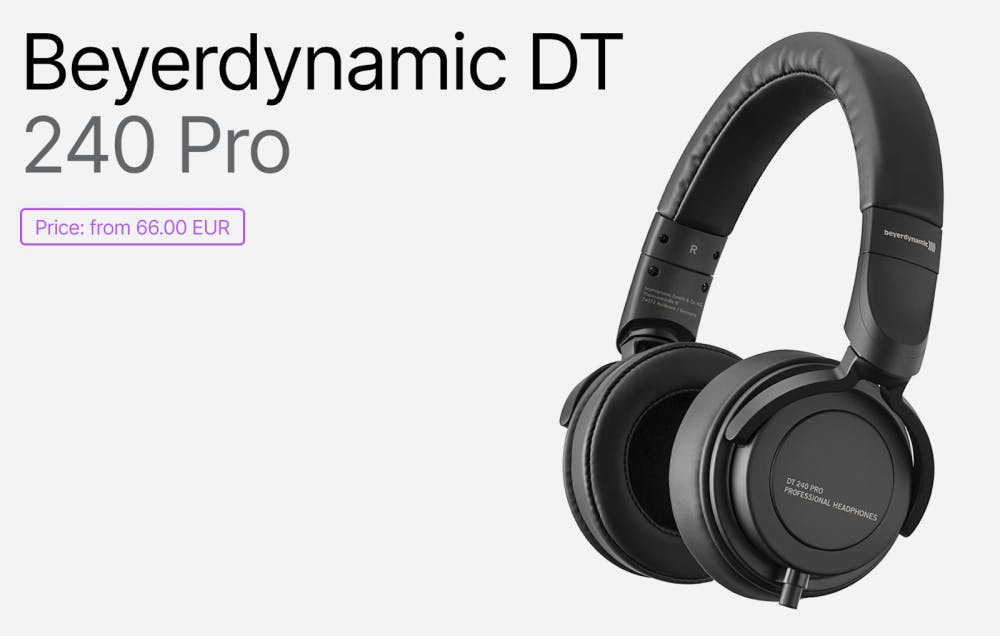
These are the best over/on-ear headphones that €70 can buy, as long as you’re not doing extended sessions non-stop. The excellent build and compact size make them especially great for electronic music producers who are after a single pair of headphones that are suited for both studio work and DJ duties. Read the full review here
7. Drop HD58X

These are among the most comfortable open-back headphones that deliver flat frequency response out-of-the-box. Durable and great for long working hours. But does not offer the best price-performance for those outside of the US.
8. Rode NTH-100

While Rode’s first headphones are quite heavily colored frequency-response-wise when used with calibration, they offer excellent sound accuracy that very few closed-back models can compete with (ATH-M50x is not one of them). Unfortunately, some users report reliability issues with clasps that fix the wires. Additionally, the fact that the wires are exposed and not integrated into the build is another potential source of issues.
9. Audio-Technica ATH-M50x
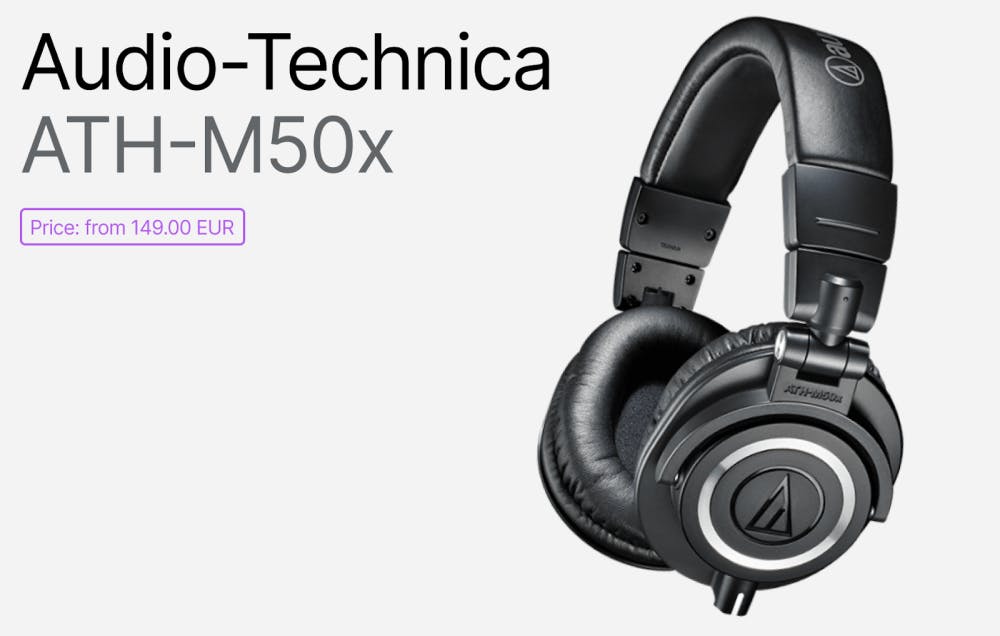
The M50x has a great fit that doesn’t get in the way of everyday use. Unlike most over-ear headphones, this one doesn’t rely on a strong clamp to achieve a good seal, therefore it is fairly comfy even in longer sessions. No doubt, it’s a great headphone with relatively few shortcomings, but the tuning might be too “fun” to be considered reference grade. Watch the full video review here
10. AKG K612 Pro

These open-back headphones deliver nearly everything one might look for in mixing headphones, yet manages to keep the cost down. High comfort, natural sound, low THD, and great adaptiveness make these headphones a reliable studio tool. Read the full review here
If you’re looking for further recommendations, we suggest reading our next article about the best headphones for listening to music.
